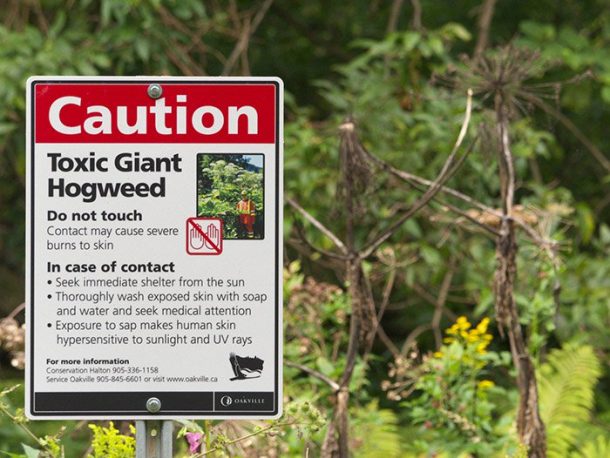Giant hogweed plant is a massive and incredibly toxic plant that spreads easily and it is is now spreading in the US. It is listed as a noxious weed in eight states and was spotted in Virginia for the first time last week. Massey Herbarium at Virginia Tech reports that 30 of these towering plants have been found in Clarke County and the locals are warned to be vigilant.
Giant hogweed (Heracleum mantegazzianum) is native to the Caucasus region and looks like a huge mutant version of the benign common hogweed. However, it can cause severe skin burns if you even brush against the bristles on its stalks. The plant emits a nasty sap the chemically irritates the skin and causes phototoxicity which causes severe damage to the skin if exposed to sunlight and UV rays.
This results in huge blisters that can leave behind nasty scars and photosensitivity for years to come. The plant might look innocent to you if you are not aware of it. The giant hogweed can grow up to be 4 meters tall and spreads the huge leaves that produce massive umbrella-shaped clusters of white flowers.
It was initially a mistake made by the British in the 19th century when it was introduced as an ornamental garden plant. It was introduced to North America after a few decades and ever since then has been spreading. It is very hard to prevent it from spreading. Each plant produces thousands of seeds which remain viable in the soil for several years.

“In some cases, a giant hogweed infestation is best controlled using several different methods in combination or in succession – in other words, a two, three, or even four-pronged attack plan,” explains the New York Department of Environmental Conservation (NYDEC).
This attack plan includes cutting the plant roots, removing the seed heads and mowing down the plants when they are still small. The whole plants are even dosed with herbicide. No matter how small the plant, going near it still requires protective gear.
Who would have thought a plant could be so troublesome.


